Fresh concerns have been raised that Formula 1 drivers may have to perform extreme energy saving techniques when next year’s power units are introduced.
Red Bull team principal Christian Horner, who expressed similar concerns when the new engines were first simulated two years ago, is pushing for late changes to the regulations to reduce the amount of “lift and coast” drivers will have to do.
However his opposite number at Mercedes, Toto Wolff, said F1 should not leap to assumptions about the performance of next year’s cars.
F1’s new power units for 2026 will not be able to harvest energy as effectively as current designs as they will no longer have an MGU-H. They will have an uprated MGU-K, however, and larger batteries.
In order to improve their performance on the straights, drivers will be able to operate DRS-like front and rear wing flaps continuously, regardless of how close another car is. The overtaking boost offered by DRS will be recreated using a new ‘manual override mode’, to offer drivers a proximity-based power boost.
However Horner remains concerned that on tracks with a high proportion of acceleration zones, drivers will have to back off on the straights to maximise their car’s performance over a lap. He believes chassis designers will find more downforce from their cars than the regulators envisage, increasing drag and increasing the need for drivers to lift and coast.
“The biggest concern is one that’s not a new concern, it’s one that has been flagged from two years ago from all of the PUMs [power unit manufacturers], is the amount of harvesting that there is,” he said in today’s FIA press conference. “Inevitably the chassis designers will out-perform the criteria of the regulations and therefore a consequence of that will be the amount of lift-and-coast that there will be in a grand prix.
Advert | Become a RaceFans supporter and
“Of course what you have to remember with the ’26 regs is that the car is effectively constantly in ‘DRS mode’, so as soon as you enter the straights the wings open, so there will be no passing mechanism. So the FIA have raised a topic that was looked at a little while ago by the PUMs and if it’s something that’s genuinely in the interest of the sport, in the interest of racing, not to have all this lift-and-coasting.

“I think it’s something that does warrant looking at and considering, because it doesn’t actually change the spec of the engine. It doesn’t change the output of the engines. It’s just the amount of deployment of the battery, maybe at certain grands prix.”
Wolff, however, suggested that some criticisms of the regulations are being voiced by those who expect their power units won’t be competitive. His Mercedes team dominated the three years after the last change in the power unit rules in 2014.
“Obviously, the closer you come to new regulations, the more people act – all of us – in the interest of the team,” he said. “That’s our duty.
“Where we come from is we don’t know how it’s going to pan out next year. Are we going to see energy harvesting disasters in Baku and Monza? I don’t know.
“We hope not. What we have signalled is that rather than act now based on assumptions, like we have been great at in previous years and then we’ve overshot or undershot.”
Advert | Become a RaceFans supporter and
He indicated he is against any changes to the rules before the cars have hit the track. “As Christian said it’s not like we need to throw the hardware away and then come up with something new. It’s within the software, it’s within the bandwidth of what you can do and we will see the final product hitting the road and testing next year.
“Certainly, as a power unit manufacturer we want this to be a great show. We want to win, but we are aware that in the sport there needs to be variability and unpredictability. We enjoyed the years from 2014 onwards, but over a prolonged period of time that’s certainly not the best for a sport.
“I see myself trying to be very balanced between what is good for Mercedes, which as I said I need to do, but on the other side what is the right solution going forward.”
Wolff pointed out the new power unit regulations are the reason why some manufacturers have entered or returned to the sport, and they also do not want to see changes.
“We need to avoid these swings,” he said. “The FIA proposed this engine, nobody liked it. The 50% electric [power generation] back in the day was what road cars were going to. It was a reason to attract manufacturers like Audi and Porsche, so we did that.
“So it’s difficult to change the goalposts, especially for the new ones that Honda recommitted for and Audi committed. And, including us, they are not keen on changing those goalpost at that stage. But we need to be open-minded if necessary next year.”
Advert | Become a RaceFans supporter and
Get a daily email with all our latest stories – and nothing else. No marketing, no ads. Sign up here:
GÜNDEM
29 Kasım 2025GÜNDEM
29 Kasım 2025GÜNDEM
29 Kasım 2025GÜNDEM
29 Kasım 2025GÜNDEM
29 Kasım 2025GÜNDEM
29 Kasım 2025GÜNDEM
29 Kasım 2025GENEL
29 Kasım 2025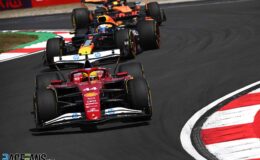 1
Ferrari struggling to recreate set-up which “worked well” in Shanghai – Hamilton | Formula 1
1173 kez okundu
1
Ferrari struggling to recreate set-up which “worked well” in Shanghai – Hamilton | Formula 1
1173 kez okundu
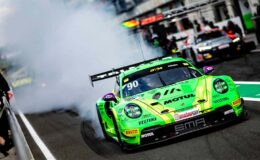 2
Ayhancan Güven DTM’i Kazanan İlk Türk Pilot Oldu!
678 kez okundu
2
Ayhancan Güven DTM’i Kazanan İlk Türk Pilot Oldu!
678 kez okundu
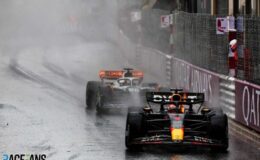 3
How will F1’s new Monaco tyre rule work – and how might teams try to exploit it? | Formula 1
426 kez okundu
3
How will F1’s new Monaco tyre rule work – and how might teams try to exploit it? | Formula 1
426 kez okundu
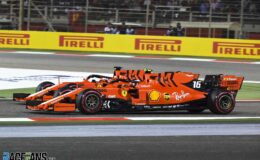 4
The lesson from Leclerc’s years of radio frustrations: He must start calling the shots | Formula 1
313 kez okundu
4
The lesson from Leclerc’s years of radio frustrations: He must start calling the shots | Formula 1
313 kez okundu
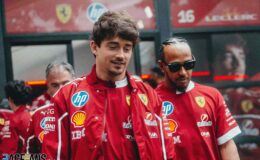 5
‘It’s very Hollywood, it’s for a broader audience’ – drivers’ views on ‘F1: The Movie’ | Formula 1
279 kez okundu
5
‘It’s very Hollywood, it’s for a broader audience’ – drivers’ views on ‘F1: The Movie’ | Formula 1
279 kez okundu